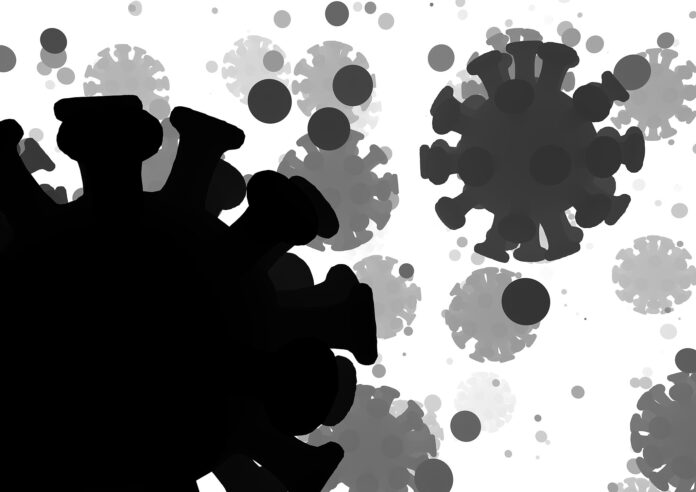
According to the province’s bi-weekly respiratory illness surveillance report, COVID-19 continues to decrease in Saskatchewan while Influenza is on the rise.
According to the new report COVID-19 has decreased in Saskatchewan. The reporting period was from Jan. 14 to Jan. 27 .The report was released on Feb. 2.
The number of positive tests for COVID-19 continued to decrease, with 134 cases in the week ending Jan. 27.
In the most recent week, the proportions of COVID-19 cases were highest among individuals 65 and above (43.7 per cent), followed by those 20-64 years of age (42.7 per cent).
In July 2023 the Saskatchewan Health Authority (SHA) took over wastewater data from the University of Saskatchewan and the University of Regina.
Increasing levels of COVID-19 were detected in Regina, North East, South West, and South Central surveyed areas, while remaining low in the surveyed areas of North West, Central East, and South East.
Test positivity for COVID-19 in the North Central region was 8.6 per cent. For influenza, test positivity was 1.5 per cent.
These are only lab-confirmed cases and not rapid antigen test-confirmed cases.
The province warns that rates should be interpreted with caution because they do not include cases detected by home rapid-antigen test kits.
In the last two weeks, two deaths associated with COVID-19 were reported. It is not known how many deaths occurred in North Central over this period.
The report shows there are currently 24 hospital admissions and four ICU admissions.
COVID-19 hospitalizations have decreased from 122 for the previous two weeks to 77 for the most recent two weeks, reflecting a 36.9 per cent drop.
COVID-19 ICU admissions have remained stable for the past four weeks.
The proportion of staffed inpatient beds occupied by COVID-19 patients decreased to 5.4 per cent for the most recent week.
There were four COVID-19 outbreaks reported in high-risk settings in the past two weeks compared to 15 in the previous two-week period.
As of Jan. 27, 17.8 per cent of those aged six months and older have received a COVID-19 vaccine dose. Vaccination coverage is generally below 10 per cent for ages six months to 64 years, except in Saskatoon (14.2 per cent), Regina (14 per cent), and North East (10.4 per cent). For those 65 and older, Far North West (33.4 per cent) and Far North Central (20.1 per cent) have less than 40 per cent coverage, while Regina (57.7 per cent), Saskatoon (54.3 per cent) and Central West (50.9 per cent) exceed 50 per cent.
Influenza has become more prevalent in the province.
The number of influenza cases has been increasing over the past two weeks. The increase was mostly due to increase in Type B influenza, which accounted for 90 per cent of positive tests in the recent week. Influenza Type A has accounted for 93.7 per cent of the positive laboratory detections this season.
There was an increase in test positivity reported across the province with higher activity in the North. Far North East reported the highest increase in the test positivity (increased by 36.4 per cent) and the lowest was in the North East (increased by 7.8 per cent) compared to the previous two weeks. Five locations (Far North West, Far North East, North Central, North East, and Saskatoon) reported test positivity higher than the provincial average of 31.0 per cent.
No influenza-associated deaths were reported in this two-week reporting period. Influenza hospitalizations have decreased from 44 for the previous two weeks to 9 for the most recent two weeks, reflecting a 79.5 per cent decrease. Influenza ICU admissions have decreased from 6 for the previous two weeks to 2 for the most recent two weeks.
As of Jan. 27, 24.4 per cent of the Saskatchewan population received influenza vaccine this season. For those aged 65 years and older overall coverage was 59 per cent, the highest was in Regina (64.1 per cent) and lowest in Far North Central (41 per cent). For those aged less than 65 years the overall coverage was 17.2 per cent; the highest was in Saskatoon (20.8 per cent) and lowest was in Far North West (10 per cent).
Influenza and COVID-19 vaccines were available in Saskatchewan effective Oct. 10, 2023.
The report also included the school absenteeism data. School absenteeism decreased from 9.3 per cent in the week ending Jan 20, to 8.8 per cent in the week ending Jan. 27.
As of Oct. 13, 2022 the Ministry of Health launched the community respiratory illness surveillance program (CRISP) report to integrate COVID-19 surveillance and reporting with provincial respiratory illness and surveillance reporting, including influenza.
The report standardizes the epidemiological information required for respiratory illness surveillance and risk management and will be issued bi-weekly during respiratory illness season.

